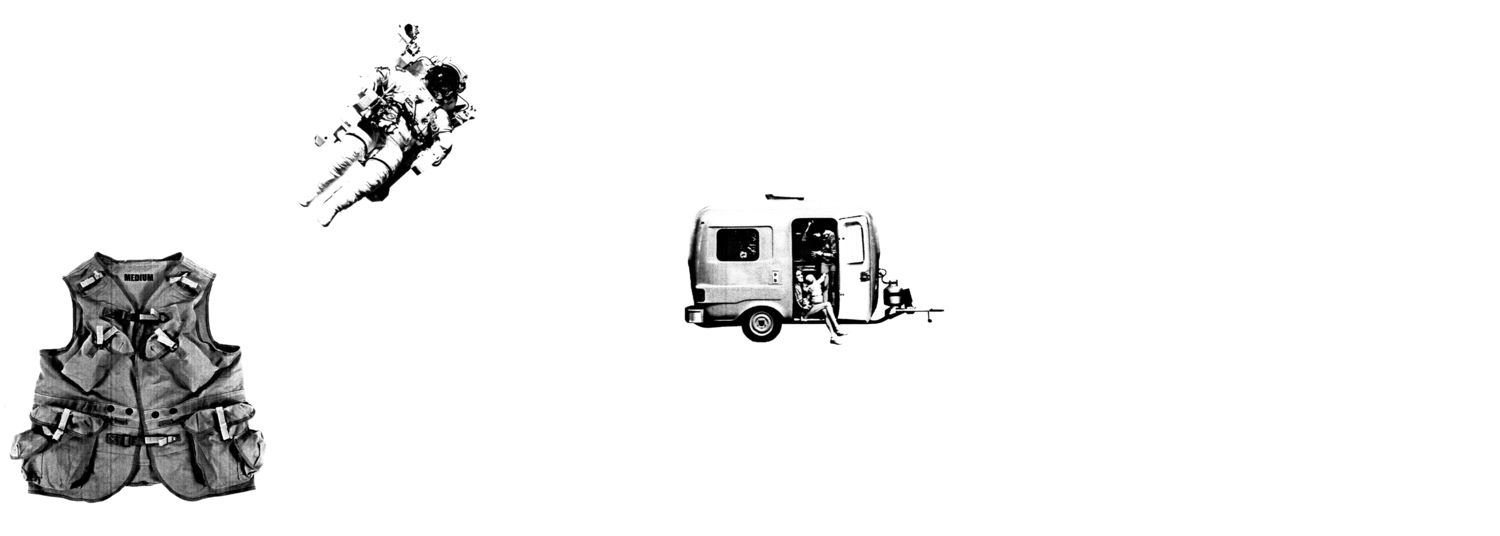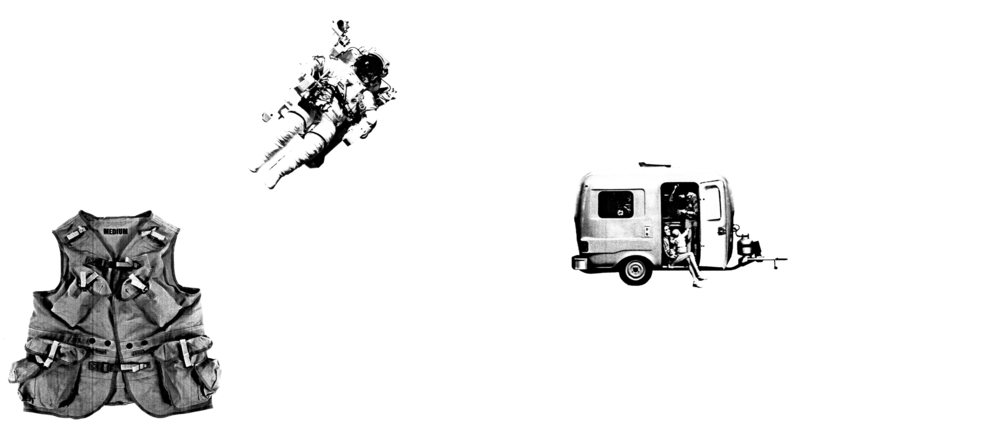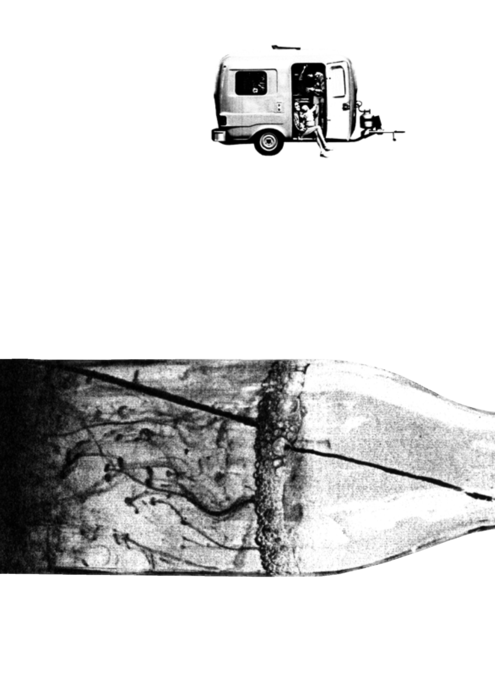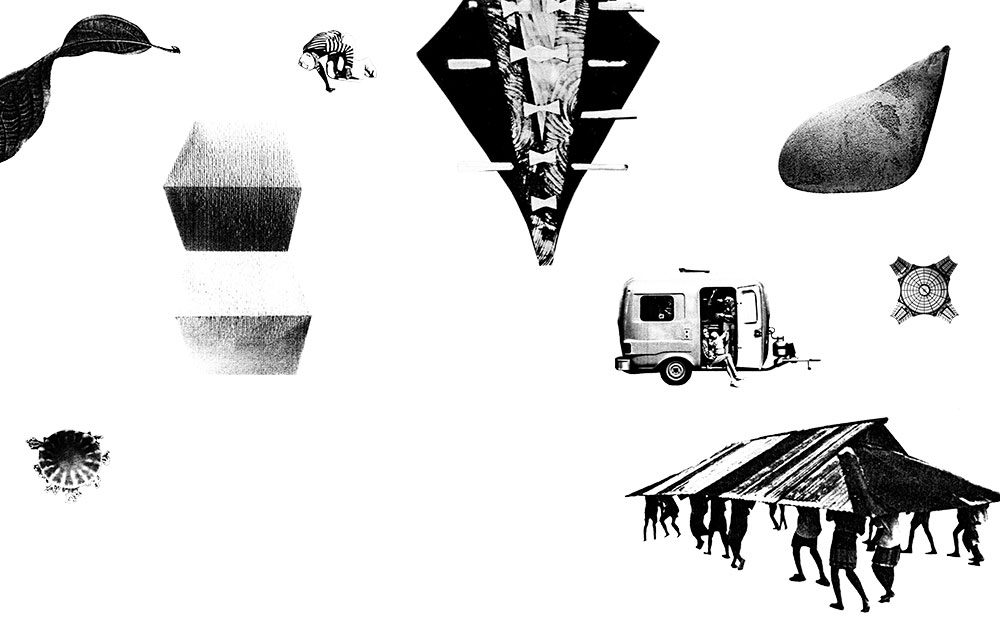CONTENT
Trip 1
In May 1974 Joseph Beuys travelled to America. He undertook the enterprise in order to see nothing else of America than a Coyote and the inside of the Rene Block Gallery in Downtown New York. In order to do that, he completely isolated and insulated himself on the trip. For him it was not the movement through landscape that counted, but the immediate experience of the place itself.
After arriving at New York airport Beuys was immediately wrapped in felt, put on a stretcher and was transported in an ambulance directly from the plane to the gallery. He did not put a foot on American soil, nor did he see anything on his trip from the airport to the gallery, it was as if he had been 'tele-transported' from Germany to the US.
After his arrival he shared the solitary space of the gallery with a Native American coyote for eight hours a day during the next three days. Somehow this was his way of knowing America before the arrival of the Europeans, a direct experience of a condition not even the first settlers were willing to make.
Beuys travelled light and brought almost nothing with him, a blanket of felt, a walking stick, some gloves and nothing more. He could wrap himself in the felt and use the stick and the gloves in order to define his space inside the Gallery. The rest was already there: the white walls of the gallery, a wooden pavement, hay as well as the temporary inhabitant of the Gallery, the coyote. Each day 50 copies of the Wall Street Journal were brought, a daily routine, which the Coyote accompanied by urinating on them.
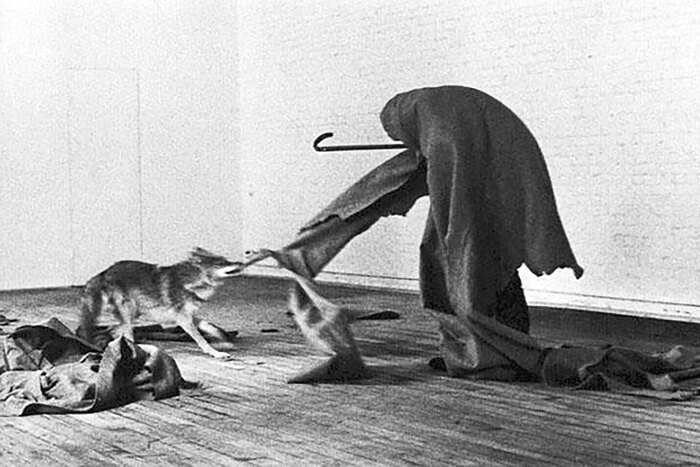 ©
©
The encounter with a wild beast, with what could be considered genuine American spirit, varied through time. Sometimes the Coyote was cautious, sometimes aggressive, sometimes indifferent, sometimes complacent. Beuys’s attitude was one of complete immersion. He acknowledged that this was the Coyote’s space, it was the Coyote’s place and he was the guest for a certain amount of time. He was the outsider, or both of them were inside the gallery, but this was the continent of the Coyote and Beuys came here to meet him. During all the time Beuys was totally alert and concentrated on the Coyote. They observed each other, reacted to habits they did not understand completely, but which they would evaluate one at a time. It were the Coyote’s rules which had to be followed here.
Trip 2
Not that far away from the Alps, in an undulating landscape of valleys and hills with fields, meadows and forests, interrupted by small settlements, circa 10 km from Lyon, a building suddenly appears on the horizon. It is surrounded by trees. This massive building in the countryside, made to be seen from far-off, is the Dominican convent of La Tourette.
La Tourette consists of an U-shaped building around a central void closed off by the monumental volume of its church at the end. The monastery includes a dormitory with 100 individual cells, a library, a refectory, an oratory, a church with its sacristy, crypt and chapels, lecture and study rooms, a cloister with an atrium crossing through the central void and a second cloister on top of the building.
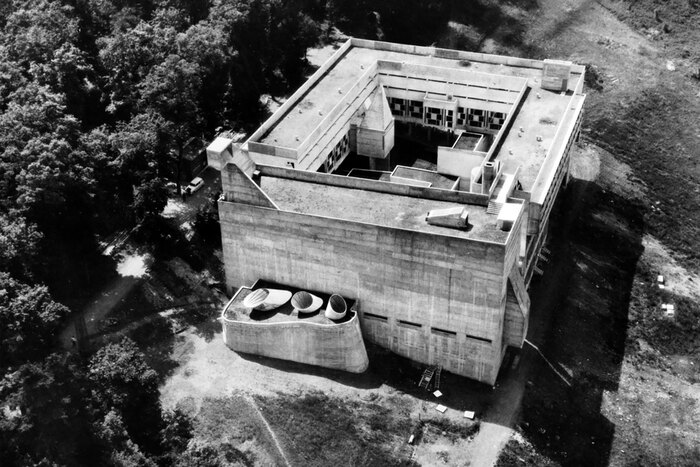 ©
©
Inside the impressive landscape with its powerful views Le Corbusier observed the road, the trees, the horizon, the sky, the wind, the orientation of the sun as well as the topography. Finally he placed the building on the top of a slope and made the decision to build from the horizontal line of the rooftop and to let the building hang from there where he needed it and touch the terrain where it might. In this way he gave the building different scales and made it participate in different contexts. Through its even upper profile it is part of the horizon, while it takes the scale of the place at the same time by reacting to the irregular relief of the slope, with the variation of its lower profile. Whereas the rectangular volume of the church, made out of beton brute, raises from the terrain, the U-shaped part of the monastery is supported almost completely by a thicket of different shaped columns, lifting the building from the ground.
The access to the building is from a road on the hillside. From here the terrain slips under the building and in order to enter the monastery a small bridge has to be crossed, as if to enter a tree house, a ship or lake dwelling. The bridge connects the road on the upper ridge of the slope with the middle floor of the monastery. Here the reception rooms, the lay brothers’ rooms with the oratory, the library and lecture rooms are situated. Above this floor there are two floors with 53 individual cells each and the rooftop cloister on top of it. Below there is a level on which two corridors form a cross and connect the three wings of the monastery, the refectory and the pantry with an atrium and the church. Finally each of the three wings has a vertical staircase which connects all the different levels and ends on the mountain slope underneath right in the middle of a meadow which during late summer might well be full of hay balls or cows.
Some spaces like the church, the chapels, the sacristy, but also the staircases are completely introverted. They are places of immanence which are able to induce states of transcendence. Some spaces, like the corridors, are related to the interior space of the courtyard. Only the cells, the library and refectory open up to the surrounding landscape. The rooftop cloister on the other hand is a space delimited by a wall of 1.7 m of height on each side and has the sky as a ceiling. Both the surrounding landscape as well as the sky are domains of transcendence able to lead to moments of immanence.
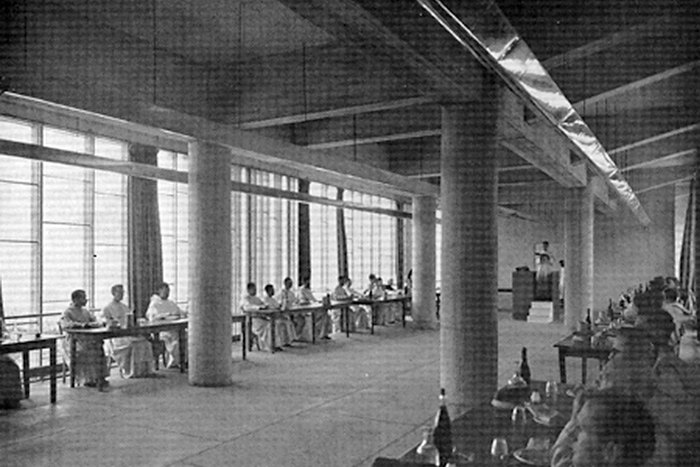 ©
©
The whole monastery is a carefully designed architectural device. Its different spaces are designed in order to help the human mind contemplate the world around them or meditate on the world inside them. One of the spaces to achieve the last is the majestic volume of the church. It is just a huge dark box with precisely placed openings, each one different, each one staging another miracle. There is beton brute around you, half shade everywhere.
The church was intended to host Dominican friars in their black dresses, two rows of twenty friars on each side of the isle, each row illuminated by a sequence of horizontal light crenels placed in the perimeter wall, one red, one yellow, one green. During early mass the prior would hold mass in the light of the rising sun entering through the vertical slid, which stretches over the full height of the church and is placed where the eastern and southern facades encounter. During compline the setting sun enters through the horizontal slid situated on the northern facade placed right below the ceiling instead, rendering the different textures of the ceiling and the perimeter walls. There is not just the one space of the isle, but there rather exists a multitude of smaller spaces inside the penumbra of the nave, each one created by the light entering through a different opening. Beside the nave, during the whole day the northern light enters into the chapel through three round light cannons on its roof, each with a different colour, while the sacristy on the opposing side receives light from the southern sun through seven triangular shafts.
The church was intended to host Dominican friars in their black dresses, two rows of twenty friars on each side of the isle, each row illuminated by a sequence of horizontal light crenels placed in the perimeter wall, one red, one yellow, one green. During early mass the prior would hold mass in the light of the rising sun entering through the vertical slid, which stretches over the full height of the church and is placed where the eastern and southern facades encounter. During compline the setting sun enters through the horizontal slid situated on the northern facade placed right below the ceiling instead, rendering the different textures of the ceiling and the perimeter walls. There is not just the one space of the isle, but there rather exists a multitude of smaller spaces inside the penumbra of the nave, each one created by the light entering through a different opening. Beside the nave, during the whole day the northern light enters into the chapel through three round light cannons on its roof, each with a different colour, while the sacristy on the opposing side receives light from the southern sun through seven triangular shafts.
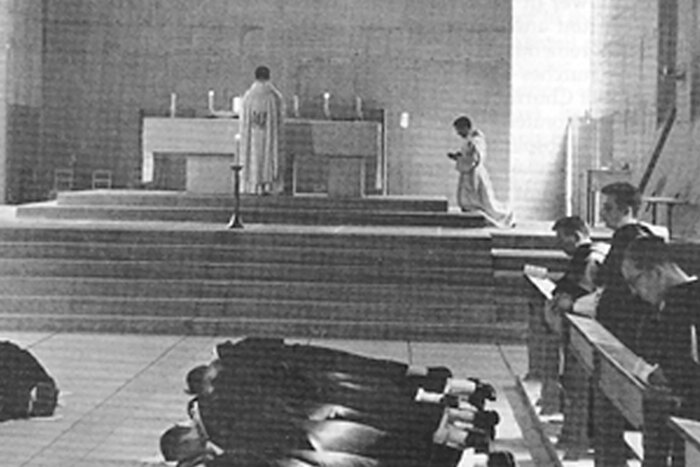 ©
©
When mass was over the friars left the introverted space of the church, crossed the cloister and walked through the corridors. These longitudinal spaces had their rectangular openings, which were placed at their end, obstructed by a sculptural object called ‘concrete flower’. This is a slab angled in such a way as to reflect light from the outside into the corridor but to block the view from inside towards the landscape. Facing the interior cloister narrow horizontal windows stretch over the whole depth of the corridors, interrupted only by a sequence of small volumes separating the upper and lower part of the wall, as if they were two walls. From these openings the different geometries of the inner cloister are visible.
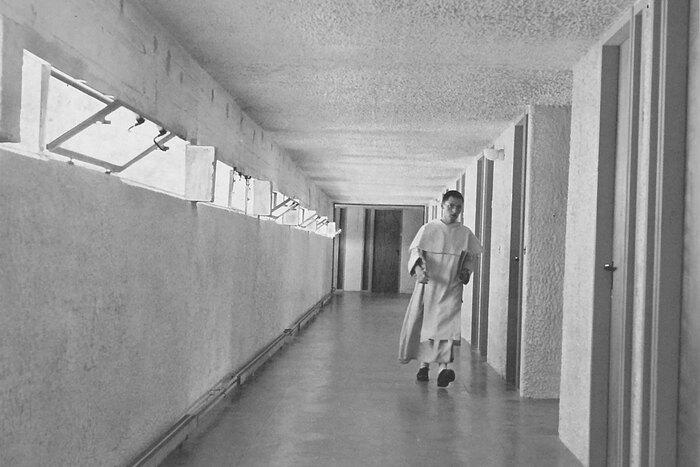 ©
©
Finally there is the friars cell. It is a narrow space combining the inner cell with a small loggia and the view on the surrounding landscape. The cell and the loggia are divided by an inventive architectural device consisting of a window in its central part with a radiator underneath, two yellow wooden frames on each side of it, one containing a door on the right and one containing a green wooden shed on the left, completed by a red curtain. It is in his cell where the friar spends most of his time in contemplation. The elements of this place are simple: a bed, a desk with a chair, a volume for storage and a sink.
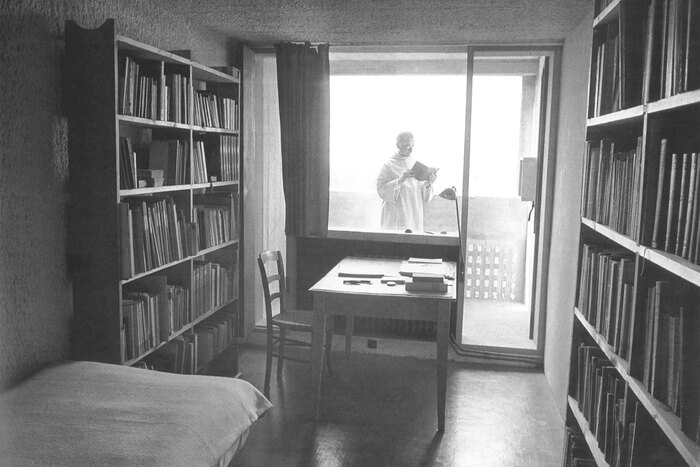 ©
©
The desk of the friar is a small lesson of architecture. It is placed in relation to the loggia beside the window, right where the radiator is situated. Different light situations can be created through the manipulation of the shed, door and curtain. To the left of the sitting friar there is the magnificent view on the surrounding landscape. Behind him there is a vertical window, which stretches the full height of the cell with the green sled to cover it. On the opposing wall of the loggia there is a small concrete frame, which can act as a shrine. The pavement of the cell is green and the walls and ceiling of the interior are covered with gunite, but in front of the table the surface changes. Right in front of the friar the gaze rests on a quite surface. Starting right at the balcony door a part of the wall inside the cell was treated as a continuous smooth plane, completely different to the rough character of the gunite cladding present everywhere else: a small square of serenity, a world in itself. The whole experience of La Tourette concentrated in one place. In front a plane of immanence and beyond the loggia a view of transcendence. A rotation of the friar's head was enough to transform its state of mind from one into the other.
La Tourette is the architect-painter-typographer-writer at the height of his oeuvre, drawing at ease. It is the artful assemblage of spaces, each one drawn skilfully, every single space a world in itself. Spaces of different sizes and degrees of solitude, each one designed to accompany the body and the mind of the monk. Each one the construction of an experience, the drawing of an ambience. Here the rules of the monk's mind had to be followed.
The trip of five eggs
What does it need to transport five eggs safely? Not much at all. Uncountable designs have been tried, finally an object found its form. It takes just a handful of dry rice straws long more or less 50 cm. One end of the bunch is bound together with a single straw and bend in such a way as to form some sort of hull, quite similar to a boat. Five straws of rice are placed under the hull and five eggs are placed within it in such a way as to accompany each egg with a single straw. Starting from the end, which has been bound together, one straw after the other is curved around its egg, twisted in front of it and folded towards the loose end. The next straw is twisted in such a way as to enclose the previous straw underneath. After all five eggs have been fixed with their straw, the loose ends of the hull and the ends of the five single straws are bound together with another single straw.
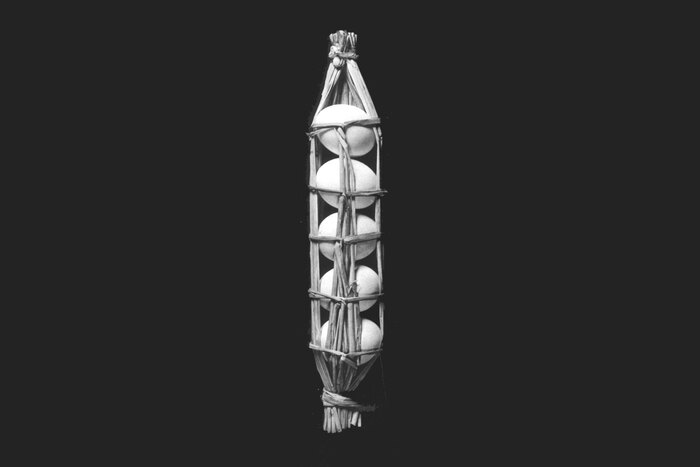 ©
©
The final result is a really sophisticated object, simple in its execution, practical in its use, genuine in its material, refined and clean in its aesthetic. Here the eggs’ as well as the straw’s rules had to be followed. George Nelson uses the word 'obstreperous' to describe the materials such as the straw used here. He contrasted the use of obstreperous materials to the 'docile, predictable synthetics' used today in the 'wonderfully complicated processes of super mass production', where everything is possible, but where the 'sense of fitness in the relationships between hand, material, use, and shape' have been lost.
To design means to invent and, according to George Nelson, to be able to produce a 'sense of delight in the look and feel of very ordinary, humble things', which means to be able to shape an experience. To design is to ask oneself what kind of experience it is to stay in a room in New York or in a Cell in a Monastery? How do you move from one place to another, over a bridge, through a tunnel, en plein air? What elements do you use every day? What kind of space is a bicycle, a bag, a table or a card-game? What kind of relations and therefore environments do they create?
Stephan Jung
KEYWORDS
AVAILABLE
SAFT 03 VOYAGE
is also available as part of:
Buy it now !
